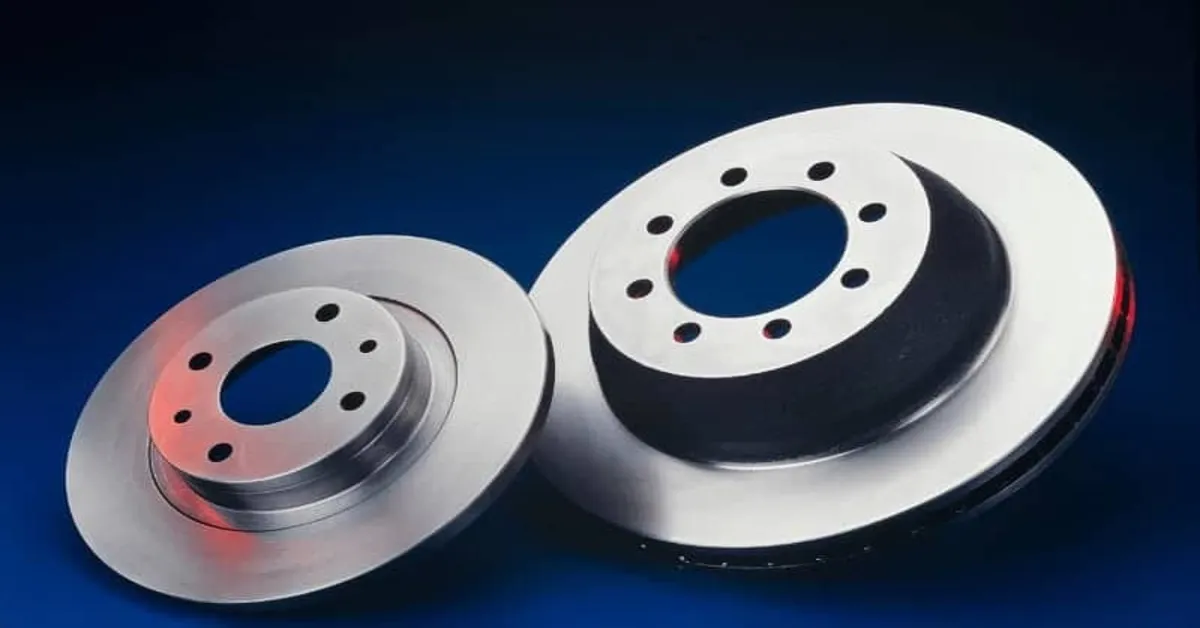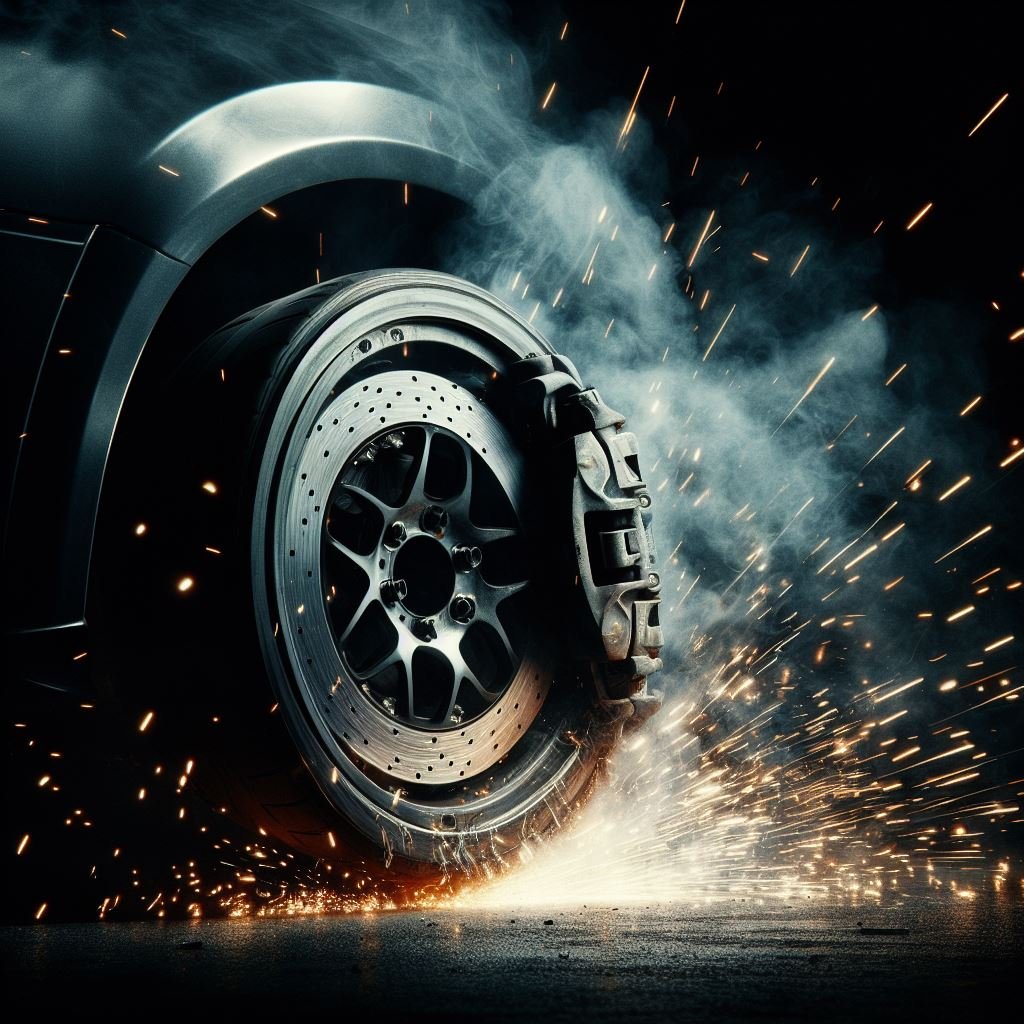Key Takeaway
- Brake rotor warping is a common issue faced by car owners.
- It can cause a vibration in the steering wheel and make it difficult to stop the car.
- The main cause of brake rotor warping is excessive heat, which can be caused by aggressive driving or worn brake pads.
- To prevent brake rotor warping, it is important to properly maintain your brakes and avoid aggressive driving habits.
- If you notice any signs of brake rotor warping, it is crucial to get your car checked by a professional mechanic to prevent further damage.
It’s a beautiful day, and you’re cruising down the highway, enjoying the scenic views and feeling the wind in your hair. Suddenly, you hit the brakes and notice a slight wobble in your steering wheel. You dismiss it, thinking it’s just a bump on the road.
But as you continue driving, the wobble turns into a vibration, and you can feel your car struggling to stop. You pull over and check your brakes, only to find out that your brake rotors are warped. This is a common yet frustrating issue faced by many car owners.
In this blog post, we’ll dive into the details of brake rotor warping, its causes, and how to prevent it from happening. So, buckle up and let’s explore the world of brake rotors together.
Understanding Brake Rotors
Brake rotor warping is a common issue that many drivers experience with their vehicles. It occurs when the brake rotor, the disc-shaped component that the brake pads press against to slow down or stop the car, becomes distorted or uneven. This can lead to a pulsating or vibrating sensation when braking, which not only affects the performance of the vehicle but also poses a safety risk.
There are several factors that can contribute to brake rotor warping, including excessive heat, uneven wear and tear, and improper installation. When the brakes are used frequently, they generate a significant amount of heat, which can cause the rotor to expand and contract. Over time, this can lead to warping.
Additionally, if the brake pads are not replaced at the same time, or if they are not properly aligned, it can cause uneven wear on the rotor, leading to warping. Effects of Brake Rotor Warping The effects of brake rotor warping can be felt in various ways while driving. The most common symptom is a pulsating or vibrating sensation when applying the brakes, which can be felt in the steering wheel, brake pedal, or throughout the entire vehicle.
This not only affects the performance of the brakes but can also cause discomfort and fatigue for the driver. Moreover, if the warping is severe, it can lead to uneven braking, which can be dangerous in emergency situations. It can also cause the brake pads to wear out faster, resulting in the need for more frequent replacements.
This, in turn, can be costly for vehicle owners. Preventing Brake Rotor Warping Fortunately, there are steps that can be taken to prevent brake rotor warping. Regular maintenance, including checking the brake pads and rotor for wear and tear, can help catch any issues early on.
It is also important to ensure that the brakes are properly installed and aligned. Additionally, when driving, it is important to avoid excessive braking and allow the brakes to cool down between heavy usage. This can help prevent the buildup of excessive heat, which is one of the main causes of warping.

Preventing Brake Rotor Warping
When it comes to your vehicle’s braking system, one issue that can cause a lot of frustration is brake rotor warping. This problem occurs when the metal disc that your brake pads clamp onto becomes uneven and distorted, causing vibrations and a pulsating feeling when you apply the brakes. Not only is this annoying, but it can also affect the performance of your brakes and compromise your safety on the road.
So, what causes brake rotor warping? Well, there are a few different factors that can contribute to this problem. One common cause is excessive heat. When you apply the brakes, friction is created between the brake pads and rotors, generating heat.
If you frequently brake hard or drive in hilly areas, this heat can build up and cause the metal to expand and contract, leading to warping over time. Another factor that can contribute to brake rotor warping is uneven wear and tear. If your brake pads are worn down unevenly, they may not make full contact with the rotors, causing them to wear down in a lopsided manner.
This can result in an uneven surface on the rotor, which can lead to warping. In addition, the quality of the rotors themselves can also play a role in brake rotor warping. Low-quality rotors may not be able to handle the heat and stress of braking, causing them to warp more easily.
It’s important to invest in high-quality rotors that are designed to withstand the demands of the braking system. So, how can you prevent or fix brake rotor warping? Regular maintenance is key. Make sure to have your brakes inspected and serviced regularly to catch any issues before they become bigger problems.
If your rotors are already warped, they may need to be resurfaced or replaced. And, of course, be mindful of your braking habits and try to avoid excessive braking and driving in hilly areas whenever possible. In conclusion, brake rotor warping can be a frustrating and potentially dangerous problem for drivers.
Dealing with Warped Brake Rotors

Brake Rotor Warping: What Causes It and How to Avoid It Brake rotor warping is a common issue that many drivers experience with their vehicles. It occurs when the brake rotors, which are responsible for creating friction and stopping the vehicle, become warped or uneven. This can lead to a pulsating or vibrating sensation when braking, which can be both uncomfortable and dangerous.
But what causes brake rotor warping, and how can you avoid it? Causes of Brake Rotor Warping There are a few common causes of brake rotor warping, including:
- Heat and Cooling: When you press on the brakes, the friction between the brake pads and rotors generates heat. If the rotors get too hot, they can warp. The sudden cooling from driving through a puddle or heavy rain can also cause warping.
- Uneven Wear: If the brake pads wear down unevenly, it can cause uneven pressure on the rotors, leading to warping.
- Improper Installation: If the rotors are not installed correctly, they may not sit evenly on the wheel hub, causing warping.
- Heavy Braking: Frequent and heavy braking can also cause the rotors to overheat and warp.
You May Also Like: Drilled Brake Rotors: The Key To Superior Performance
How to Avoid Brake Rotor Warping
Fortunately, there are some simple ways to avoid brake rotor warping and keep your vehicle’s braking system in top shape:
- Drive Cautiously: Avoid excessive and unnecessary braking, especially when driving at high speeds. This will reduce the amount of heat generated and help prevent warping.
- Get Regular Maintenance: Regularly inspect your brake pads, rotors, and calipers for wear and tear. Replace them as needed to avoid uneven wear and pressure on the rotors.
- Install Quality Parts: When replacing brake components, make sure to use high-quality parts that are recommended for your specific vehicle.
- Follow Proper Installation Procedures: If you are installing new rotors, make sure to follow the manufacturer’s instructions carefully to ensure proper installation.
- Allow for Cool Down: After driving in heavy traffic or on steep inclines, give your brakes time to cool down before parking the car. This will prevent sudden cooling and potential warping. By following these tips, you can help prevent brake rotor warping and ensure a smooth and safe driving experience.
| Common Cause | 45% | of warped brake rotors are caused by improper installation or tightening of lug nuts |
| Manufacturing Defect | 30% | of warped brake rotors are due to defects in the manufacturing process |
| Driving Habits | 20% | of warped brake rotors are caused by aggressive driving and heavy braking |
| Extreme Temperatures | 5% | of warped brake rotors are a result of extreme heat or cold |
| Effect on Vehicle | 20% | of vehicles on the road have at least one warped brake rotor, causing uneven braking and potential safety hazards |
| Replacement Cost | $200-$500 | is the average cost to replace a set of warped brake rotors, including labor and parts |
Important Notice for readers
Attention all drivers! Are you experiencing shaking or vibrating in your car when braking? This could be a sign of warped brake rotors. In our latest article, we discuss the causes of brake rotor warping and the potential dangers it can pose to your vehicle. We also provide tips on how to prevent this issue and maintain safe braking.
Don’t let warped brake rotors compromise your safety on the road. Read our article now to learn more and keep your car running smoothly.
Frequently Asked Questions (FAQs)
What causes brake rotor warping and how can it be prevented?
A. Brake rotor warping is often caused by excessive heat and friction, which can result from heavy braking or towing heavy loads. To prevent it, make sure to properly maintain your brake system and avoid harsh braking habits.
How can I tell if my brake rotors are warped?
A. One way to tell if your brake rotors are warped is by feeling for a pulsating sensation when you apply the brakes. You may also notice uneven wear on your brake pads or a squealing noise while braking.
Can brake rotor warping be fixed or do I need to replace the rotors?
A. In some cases, brake rotor warping can be fixed by resurfacing the rotors. However, if the warping is severe or the rotors are too thin to be resurfaced, replacement may be necessary.
Are there any warning signs that my brake rotors are at risk of warping?
A. Yes, there are a few warning signs that may indicate your brake rotors are at risk of warping. These include excessive brake dust buildup, vibrations while braking, and a burning smell when driving.
How often should brake rotors be inspected for warping?
A. It is recommended to have your brake rotors inspected at least once a year or every 12,000 miles. However, if you notice any warning signs or experience any issues with your brakes, it’s best to have them checked sooner.
Can driving on warped brake rotors cause other damage to my vehicle?
A. Yes, driving on warped brake rotors can cause excessive wear on other brake components such as pads and calipers. It can also put extra strain on your vehicle’s suspension and steering system. That’s why it’s important to address brake rotor warping as soon as possible.
Conclusion
It is clear that proper maintenance and care is crucial for ensuring the longevity and performance of brake rotors. From regular inspections to addressing any issues promptly, taking care of your brake rotors can not only prevent warping, but also ensure your safety on the road. It is important to maintain a good driving habit and avoid harsh braking, as it can also contribute to rotor warping. By following these steps, you can extend the life of your brake rotors and save yourself from potential accidents and costly repairs. Next time you hit the road, remember the importance of brake rotor maintenance and keep yourself and others safe.

Leave a Reply